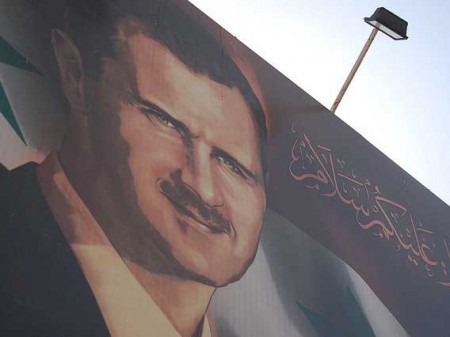
As the West begins to gear up for the centenary of the outbreak of World War I in 1914, the Middle East is being convulsed as never before by the legacy of the Ottoman Empire’s breakup. Look no farther than Syria, where one part of that legacy – the Sykes-Picot Agreement, which divided the Levant into British and French spheres of influence even while the Great War still raged – is coming to a brutally violent end.
Likewise, the current turmoil in Turkey is, at least in part, a consequence of “neo-Ottoman” overreach by Prime Minister Recep Tayyip Erdoğan’s government. In seeking to establish the type of regional influence that Turks have not had since Kemal Atatürk founded the Republic of Turkey, Erdoğan has fallen prey to some of the Ottoman regime’s hubris.
The Levant has, of course, been the scene of countless conflicts through the centuries. Sir Archibald Wavell, one of Britain’s greatest World War II generals and the penultimate Viceroy of India, wrote in his biography of the WWI Field-Marshal Edmund Allenby, who led the Allies in the Levant: “The greatest exploit in the history of horsed cavalry, and possibly their last success on a large scale, had ended within a short distance of the battlefield of Issus, where Alexander the Great first showed how battles could be won.”
But peace still eludes the Levant. As Middle East analyst Murtaza Hussain recently observed: “Syria and Iraq, formerly unified Arab states formed after the defeat of their former Ottoman rulers, exist today only in name.” What will emerge could be a fragmented, easily manipulated region.
This is why Syria’s civil war is now a geopolitical battle for regional domination, with multiple fractures along sectarian lines. As is now clear, no country is really free of the charge of interfering in Syria. While Shia-majority Iraq has attempted to portray itself as neutral, it has permitted Iranian flights to use its airspace to carry weapons to President Bashar al-Assad’s regime.
Iran, too, has long used its alliance with Syria to pursue its interests in the Levant, which include support for Hezbollah in Lebanon. On the ground, Hezbollah, now openly fighting in Syria to keep Assad in power, asserts that “war is coming to Aleppo,” the ancient city that is the heart of the anti-Assad rebellion.
Indeed, according to Lakhdar Brahimi, who serves as Joint Special Representative of the United Nations and the Arab League for Syria, there are an estimated 148 groups, big and small, fighting in the country. Meanwhile, Saudi Arabia and Qatar – which Middle East commentator Saeed Naqvi has called the “most vulnerable Sunni Kingdoms” – attempt “to divert popular discontent along sectarian, Shia-Sunni lines.”
This ancient fracture, papered over by Sir Mark Sykes and François Georges-Picot 97 years ago in their secret agreement, has now swallowed Syria, with Assad portrayed as some sort of Alawite ogre. Many Western diplomats appear to be of the same superficial cast of mind as Sykes and Picot, believing that Assad’s fall from power would remove Syria from the Iran-Hezbollah-Hamas axis.
But will it? And who or what will replace Assad? Surely not the ragtag groups fighting Assad’s regime, even if the United States now supplies some of them with arms, as President Barack Obama’s administration recently announced.
Recent history suggests just how malleable the elements in play in Syria really are. Consider Saudi Arabia’s actions there. As Bruce Riedel, an ex-CIA analyst and former National Security Council member, recently noted, “Ironically, [Saudi intelligence chief Prince] Bandar was crucial to the transition in Syria from Hafez Assad to Bashar back in 2000, assuring key Alawite generals, then in the regime, that Bashar was up to the job and had Saudi support.” Now the same Prince Bandar “is trying to get arms to the Sunni rebels to oust Bashar.”
Such long-term unpredictability is why the former European Union foreign-policy high representative Javier Solana and former NATO Secretary General Jaap de Hoop Scheffer assert that talks in Geneva are the only viable way out of the Syrian morass. An agreement last month between US Secretary of State John Kerry and Russian Foreign Minister Sergey V. Lavrov to launch a new political process for Syria, Geneva II, marked a possible opportunity; but hope is waning even before the talks begin.
Indeed, one reason for this is that, on the opening day of the Russia-EU Summit in Yekaterinburg on June 4, Russian President Vladimir Putin confirmed that his country will honor its contract with Syria to deliver S-300 surface-to-air missiles. Putin stressed Russia’s disappointment over the EU’s failure to maintain the arms embargo against Syria, thus permitting each EU member state to arm the Syrian rebels.
Now, with Obama’s decision to send arms as well, his “red line” in Syria – the use of chemical weapons – could well create a legacy as damaging to the region as that of the Sykes-Picot “line in the sand” proved to be. To arm the rebel groups is, perhaps inevitably, also to arm their terrorist and mercenary allies. That is not a recipe for long-term stability.
Copyright Project Syndicate.
For additional reading on this topic please see:
The Future of Syria and the Regional Arms Race
An End-Game in Syria?
The Syrian Crisis and the Saudi-Iranian Rivalry
For more information on issues and events that shape our world please visit the ISN’s Weekly Dossiers and Security Watch.

